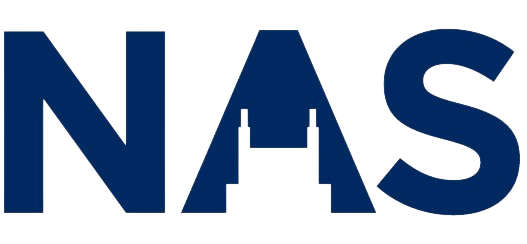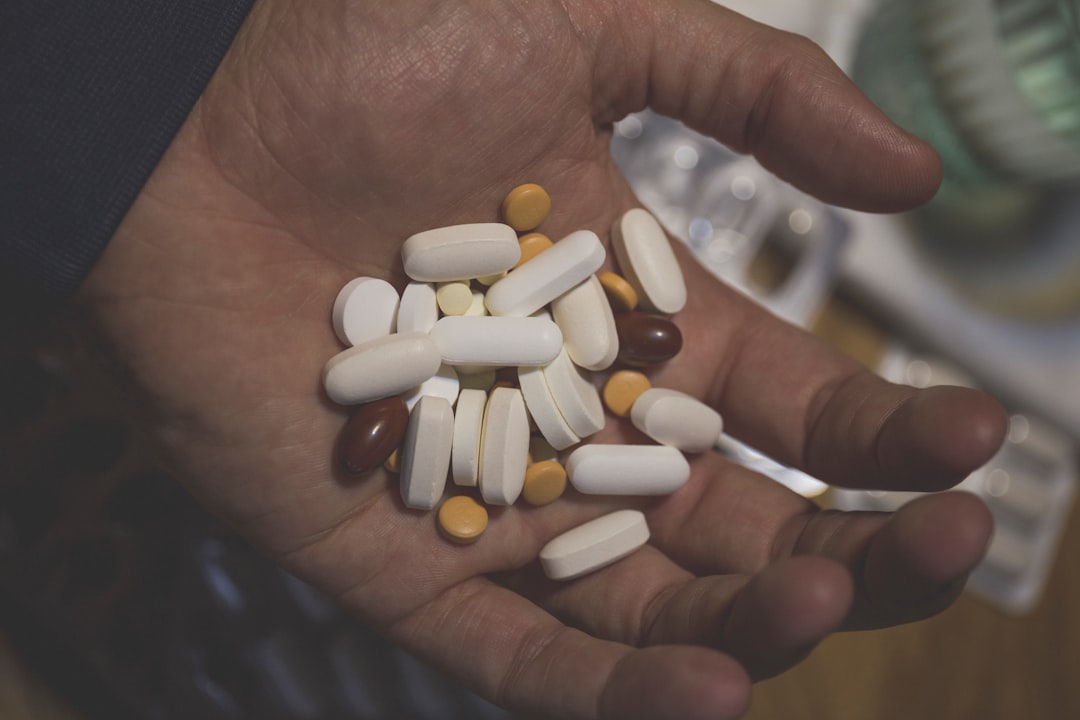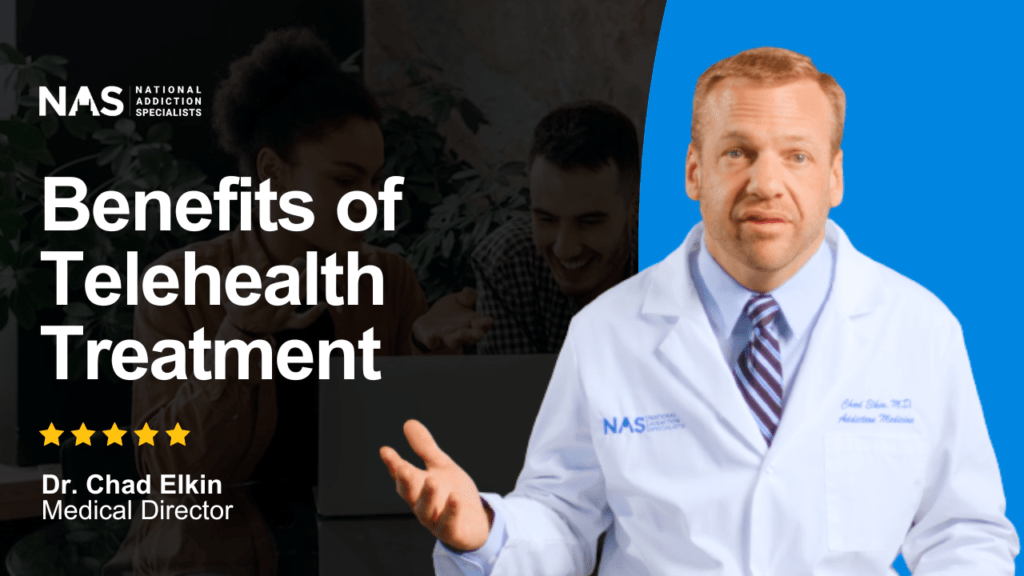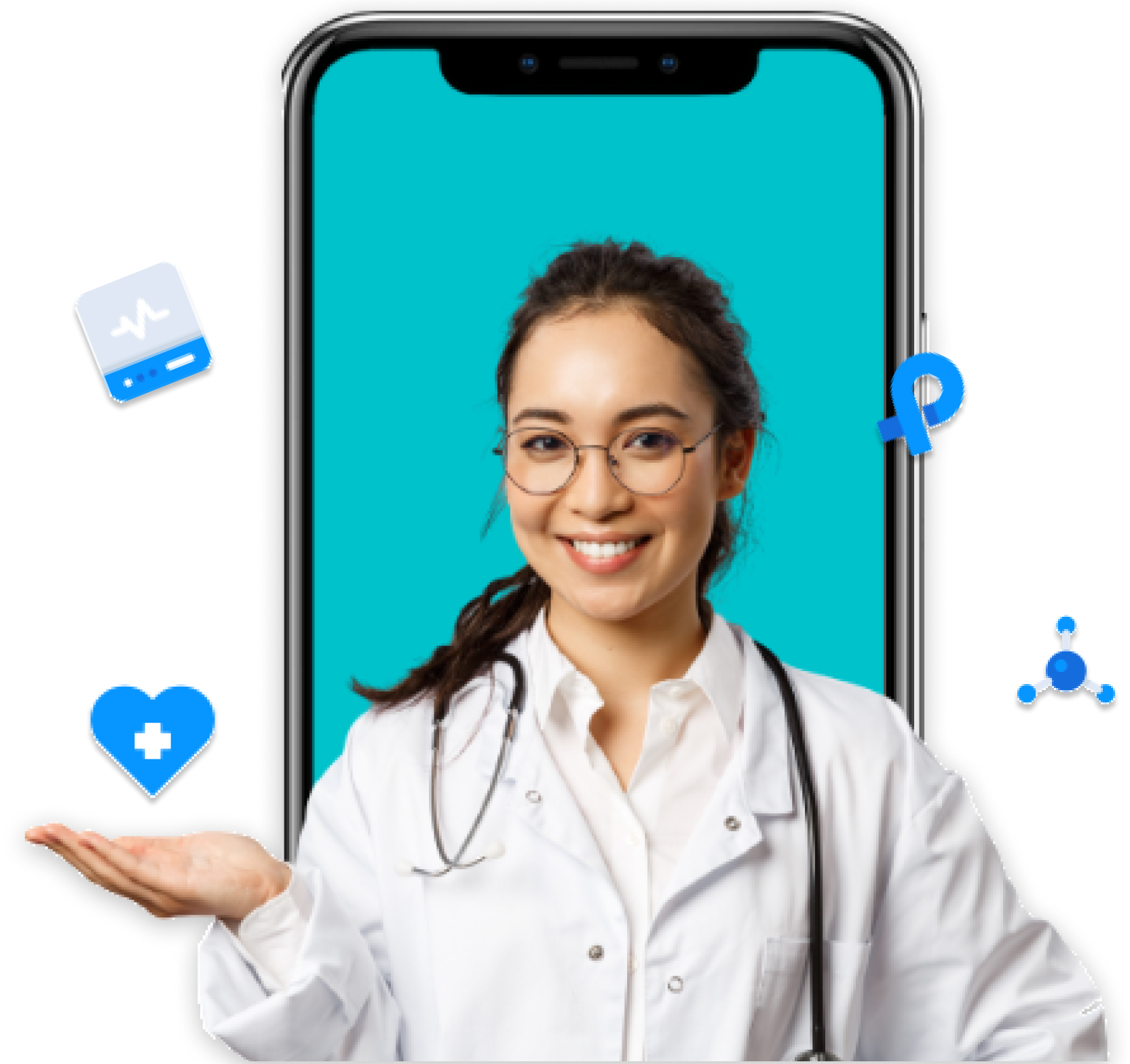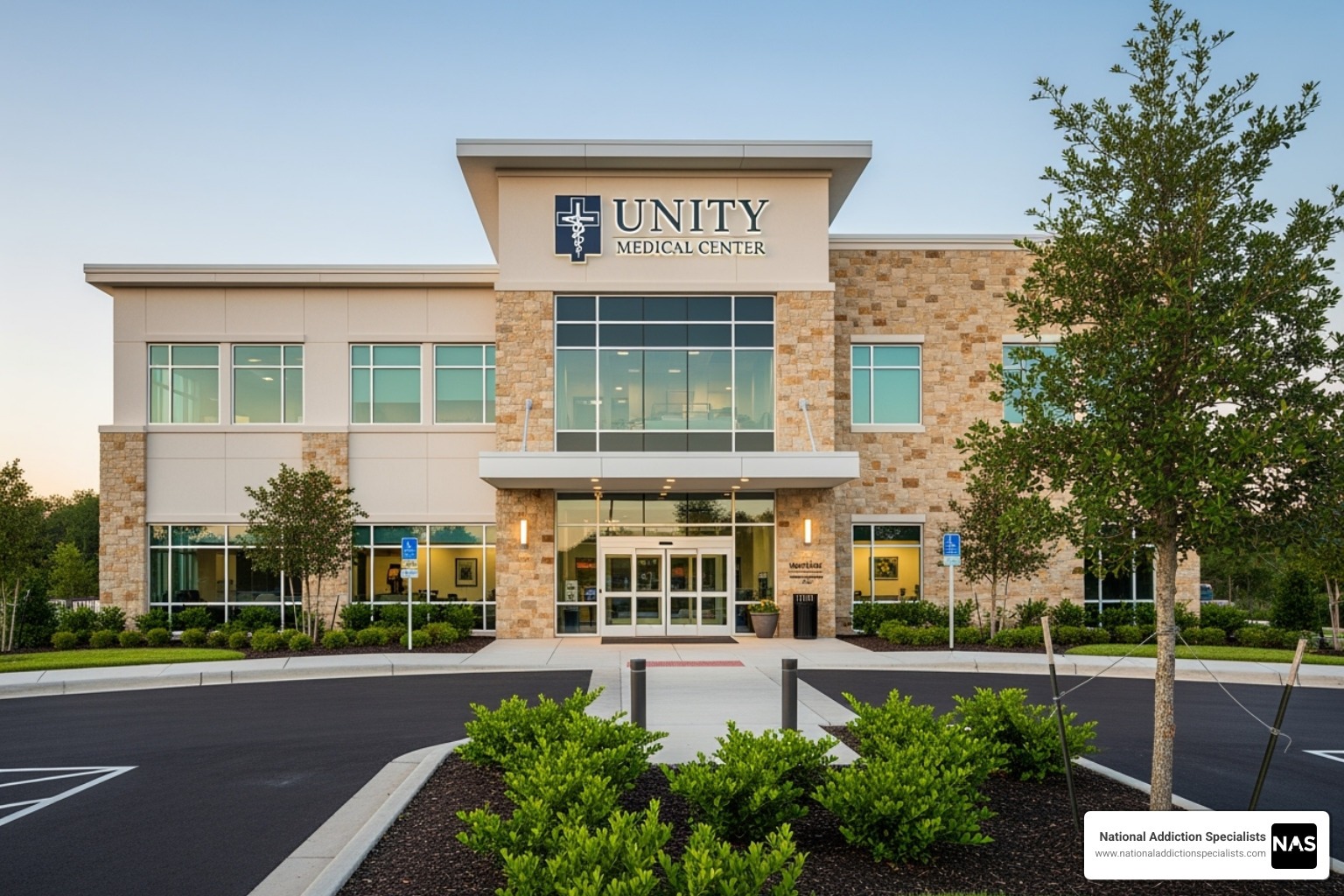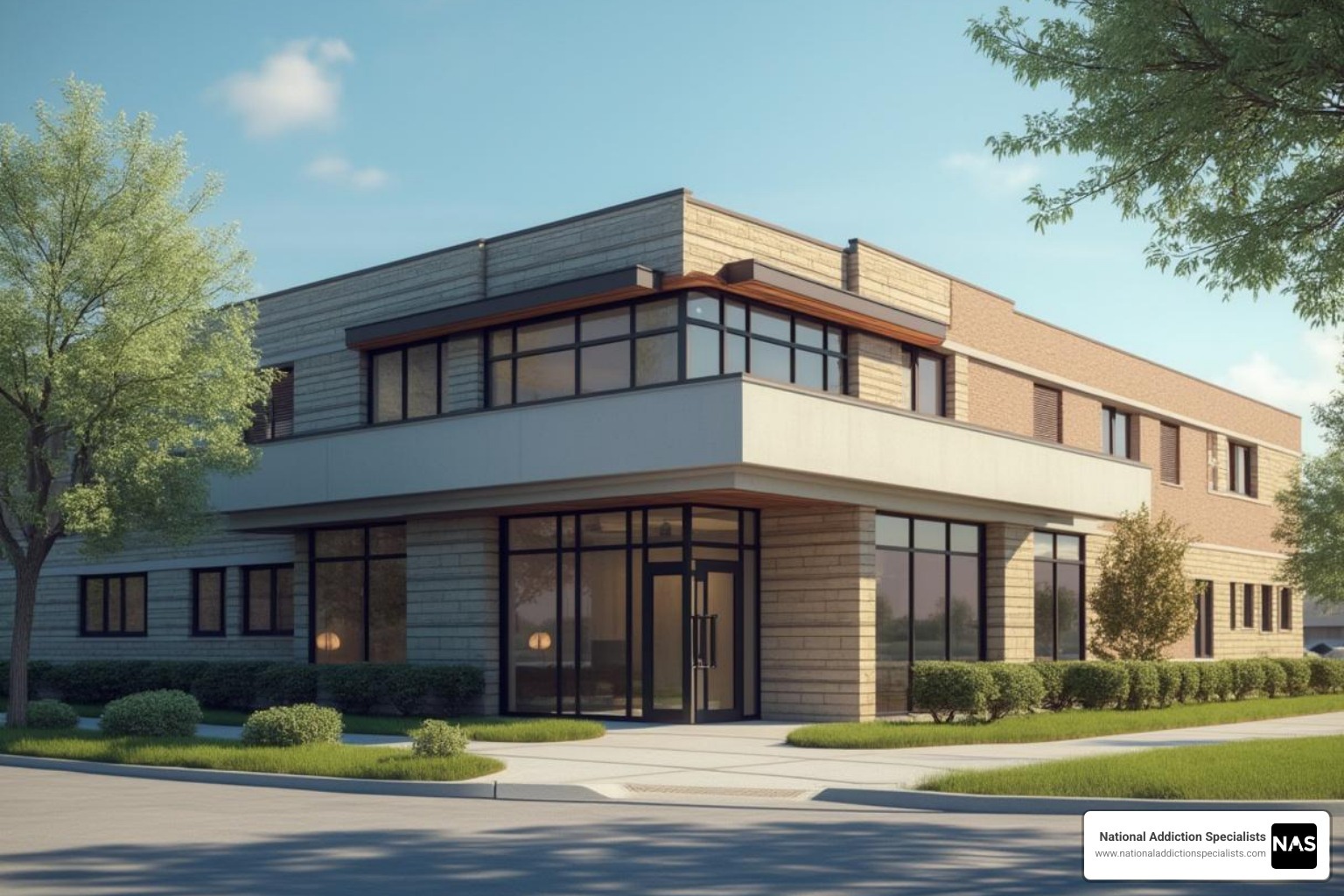Why Effective Treatment for Opioid Use Is Essential
Treatment for opioid use has become one of the most critical healthcare needs in America, with over 800,000 Americans dying from drug overdoses between 1999 and 2020. The good news is that opioid use disorder (OUD) is a treatable medical condition, and recovery is absolutely possible with the right approach.
Main Treatment Options for Opioid Use:
- Medication-Assisted Treatment (MAT) – Gold standard combining medications like buprenorphine (Suboxone®) with counseling
- Buprenorphine therapy – Reduces cravings and withdrawal symptoms while blocking other opioids
- Methadone treatment – Long-acting medication that prevents withdrawal and reduces cravings
- Naltrexone – Blocks opioid effects and prevents relapse after detox
- Counseling and behavioral therapy – Addresses underlying causes and builds coping skills
- Naloxone (Narcan) – Emergency medication that reverses opioid overdoses
The reality is that millions of Americans experience OUD, but fewer than 1 in 5 people receive evidence-based treatment. This isn’t because treatment doesn’t work – research shows that medication-assisted treatment increases retention rates to 70-79% and dramatically reduces overdose deaths.
Opioid addiction changes your brain chemistry, creating powerful cravings and withdrawal symptoms that make it extremely difficult to stop using on willpower alone. That’s why detox by itself isn’t effective – it needs to be followed by ongoing treatment that addresses both the physical dependence and the psychological aspects of addiction.
I’m Dr. Chad Elkin, a board-certified addiction medicine physician and founder of National Addiction Specialists, where I’ve dedicated my career to providing accessible treatment for opioid use through evidence-based approaches including telemedicine Suboxone therapy. My experience treating thousands of patients has shown me that with the right treatment plan, recovery isn’t just possible – it’s probable.

Understanding Opioid Use Disorder (OUD)
Let me be clear: Opioid Use Disorder (OUD) is not a character flaw. It’s a chronic brain disease, similar to diabetes or heart disease, that changes brain chemistry, making it incredibly difficult to stop using opioids. The scale of this crisis is immense, but after treating thousands of patients, I know that OUD is absolutely treatable. With the right treatment for opioid use, recovery is probable.
When we approach OUD as the medical condition it is, rather than a moral failing, people feel safer seeking help and communities begin to heal. The Scientific research on addiction from the Surgeon General confirms that addiction is a disease, not a choice.
What are the signs and symptoms of opioid addiction?
Recognizing the signs of opioid addiction early is life-saving. The sooner someone gets treatment for opioid use, the better their chances of recovery. Symptoms fall into three main categories:
- Physical symptoms: These include severe, flu-like withdrawal symptoms (nausea, muscle aches, sweating) when trying to stop, excessive drowsiness, pinpoint pupils, and unexplained weight loss. While opioid withdrawal feels terrible, it’s not typically life-threatening like alcohol withdrawal.
- Behavioral changes: Look for increased or risky opioid use, neglecting responsibilities, social isolation, sudden financial problems, and secretive behavior like hiding pills or lying about their whereabouts.
- Psychological symptoms: A key sign is intense cravings, an overwhelming urge to use. Over time, opioid use can also lead to mood swings, irritability, anxiety, and depression.
It’s important to distinguish between physical dependence and addiction. A patient taking prescribed opioids for cancer pain might experience withdrawal if they stop, but they aren’t addicted. Addiction involves both physical and psychological dependence, where the drug becomes central to a person’s life despite negative consequences.
What causes opioid addiction and what are the risk factors?
Opioid addiction isn’t a matter of willpower; it’s about brain chemistry. Opioids bind to specific opioid receptors, triggering a massive release of dopamine, the brain’s “feel-good” chemical. This creates powerful euphoria and pain relief.
With repeated use, the brain adapts. Tolerance develops, requiring larger doses for the same effect, and physical dependence sets in, where the brain needs opioids to function normally. This leads to a vicious cycle of using just to avoid miserable withdrawal symptoms. Chronic opioid use causes lasting changes to brain pathways controlling reward, motivation, and self-control, which is why OUD is a chronic, relapsing disease.
Several risk factors increase vulnerability:
- Genetics and family history of addiction.
- Environmental factors, like exposure to drug use.
- Psychological trauma and using opioids to numb emotional pain.
- Co-occurring mental health conditions like depression, anxiety, or PTSD.
- History of prescription opioid use, even for legitimate pain.
- Previous substance use, socioeconomic stress, and unemployment.
If you’re taking prescription opioids, follow your doctor’s instructions carefully. For excellent guidance on using them safely, I recommend watching Best Advice for People Taking Opioid Medication- Dr. Mike Evans.
The bottom line? OUD can happen to anyone, but it’s entirely treatable with the right medical care and support.
The Gold Standard: Medication-Assisted Treatment for Opioid Use
For treatment for opioid use, Medication-Assisted Treatment (MAT) is the gold standard. It treats OUD like other chronic diseases by combining FDA-approved medications with counseling and behavioral therapies. This integrated approach yields dramatically higher success rates than medication or counseling alone.
The goal of MAT is to prevent overdose, reduce cravings, and help you rebuild your life, relationships, and career. A recovery plan that includes medication for opioid use disorder significantly increases your chances of long-term success.

How Buprenorphine-Based Treatment Works
Buprenorphine-based therapy, including Suboxone®, gives your brain what it needs without the dangerous highs and lows of illicit opioids. As a partial opioid agonist, it attaches to opioid receptors but only partially activates them. This unique action has several key benefits:
- Reduces cravings by satisfying the brain’s need for opioids without causing intense euphoria.
- Prevents withdrawal by maintaining a steady level of opioid activity.
- Stabilizes brain chemistry, helping the brain’s reward system heal over time.
- Blocks other opioids, acting as a protective shield against relapse.
Buprenorphine also significantly lowers overdose risk due to a “ceiling effect,” where taking more does not increase its effects. This leads to reduced disease transmission from injection drug use and improved treatment retention rates of 71-79%.
Key Medication: Buprenorphine (Suboxone®)
Buprenorphine, especially when combined with naloxone in medications like Suboxone®, is a leading medication for opioid addiction treatment. The naloxone is a safety feature that causes immediate withdrawal if injected, deterring misuse.
Let me break down how buprenorphine compares to other treatment medications:
| Feature | Buprenorphine (e.g., Suboxone®) | Methadone | Naltrexone |
|---|---|---|---|
| Type | Partial Opioid Agonist | Full Opioid Agonist | Opioid Antagonist |
| How it Works | Reduces cravings and withdrawal; blocks other opioids | Prevents withdrawal and cravings | Blocks euphoric effects of opioids |
| Accessibility | Can be prescribed by certified doctors; available via telehealth | Only from approved treatment programs; often daily visits | Any clinician can prescribe |
| Overdose Risk | Lower risk due to ceiling effect | Higher risk with interactions | No opioid overdose risk |
| Starting Treatment | Must be in mild withdrawal first | Can start immediately | Must be opioid-free for 7-10 days |
Buprenorphine is a first-line therapy due to its balance of effectiveness and safety. It can be prescribed by certified clinicians, including via telemedicine—our specialty at National Addiction Specialists. The flexibility of buprenorphine treatment means you can get care from home, whether you’re in Tennessee or Virginia. This accessibility has been a game-changer for many.
For comprehensive information about all medication-assisted treatment options, the Medication-Assisted Treatment (MAT) resource from SAMHSA provides excellent additional details.
The Role of Counseling in Effective Treatment for Opioid Use
Medication addresses the physical side of addiction, but counseling is essential for the psychological aspects. It helps you rebuild your life, heal relationships, and develop skills for long-term recovery. Counseling helps you change drug-related attitudes and behaviors, build life skills for managing stress and responsibilities, and address root causes like trauma or co-occurring mental health conditions.
Effective therapies include:
- Cognitive-Behavioral Therapy (CBT): Helps identify and change negative thought patterns that lead to drug use.
- Contingency Management: Uses positive reinforcement to build healthy habits.
- Individual and Group Counseling: Provide personalized attention and peer support, connecting you with others who understand your journey.
At National Addiction Specialists, we integrate counseling as a core part of our personalized treatment plans. The combination of medication and counseling doesn’t just help you stop using opioids—it helps you build a life you want to live.
For more information about behavioral medicine approaches, you can explore behavioral medicine resources to understand the broader field.
Make an Appointment to Treat Addiction
Please don’t hesitate. Make an appointment today.
Your Path to Recovery: Access, Support, and Long-Term Success
Recovery from OUD is about rebuilding your life and finding hope. While the journey can feel overwhelming, you can succeed. Detox alone is not enough for lasting recovery. Detox manages withdrawal, but it’s only the first step. Without ongoing medication-assisted treatment, your tolerance to opioids drops rapidly. This means a relapse on a previously used amount can be fatal. Effective treatment for opioid use requires ongoing support, not just a short-term detox.

How to Find and Access Treatment for Opioid Use
Taking the first step toward treatment for opioid use can be simple. You can start with your regular doctor, as many are now certified to prescribe buprenorphine. For specialized care, providers like National Addiction Specialists offer telemedicine-based Suboxone treatment. This allows you to receive expert care from the privacy of your home, which is a game-changer for those in Tennessee and Virginia, especially in rural areas. Telemedicine removes barriers like travel and time off work, and research shows it improves treatment retention.
Financial barriers shouldn’t stop you. We accept Medicaid, Medicare, and many other insurance plans. The Mental Health Parity and Addiction Equity Act ensures most insurers cover addiction treatment. Don’t let cost concerns prevent you from reaching out.
Make an Appointment to Treat Addiction
For additional help finding treatment services, SAMHSA offers excellent resources through their Treatment Locator and National Helpline. You can also call their confidential helpline at 1-800-662-HELP (4357) anytime.
The Lifesaving Role of Naloxone in Overdose Emergencies
Naloxone (often known by the brand name Narcan) is a life-saving medication that reverses opioid overdoses. As an opioid antagonist, it blocks opioid receptors in the brain, restoring normal breathing within minutes. This is critical because of the prevalence of fentanyl, a powerful synthetic opioid often mixed into other drugs.
After administering naloxone, always call 911, as its effects are temporary and the overdose can return. Naloxone is available without a prescription in every state, often for free through health departments and community programs like Take Home Naloxone kits. “Good Samaritan Laws” in most states protect people who call for help during an overdose from drug possession charges.
How Long Does Treatment Last and What Does Recovery Look Like?
A common question is, “How long does treatment last?” The answer is that recovery is deeply personal. At National Addiction Specialists, we create personalized recovery plans based on your unique needs, including the severity of OUD, co-occurring conditions, and your support system.
While at least 90 days of treatment is needed for significant improvement, many people benefit from MAT for several years, or even indefinitely, to maintain stability. Think of it like managing any other chronic condition, like diabetes; it requires ongoing care as the brain heals.
Recovery is more than just abstinence. It’s about getting your life back: improving your physical and mental health, healing relationships, and returning to work, school, or hobbies. Success stories are common, with MAT patients showing high retention rates (up to 79%), reduced overdose risk, and fewer legal problems.
While challenges like stigma and access issues exist, they are not impossible. The expansion of telemedicine is making effective treatment for opioid use more accessible than ever. You don’t have to face this alone. Recovery is possible, and it starts with taking the first step and committing to treatment.
Conclusion
The journey out of opioid use disorder can feel overwhelming, but recovery is not just possible—it’s happening every day. As we’ve explored, evidence-based treatment for opioid use offers a clear path to hope. The key is treating OUD as a medical condition. Medications like buprenorphine (Suboxone®), combined with counseling in a Medication-Assisted Treatment (MAT) plan, restore brain chemistry and address the root causes of addiction.
At National Addiction Specialists, I’ve seen countless patients reclaim their lives with the right treatment. Our telemedicine approach removes barriers, allowing you to access life-changing care from the privacy of your home in Tennessee and Virginia.
Support is crucial, and you are not alone. Our compassionate team is here to provide expert, confidential care. Taking the first step requires courage, but it’s a step worth taking. The science is clear, the treatments work, and we’re here to help. Your recovery story can start today.
Make an Appointment to Treat Addiction
Please don’t hesitate. Make an appointment today.
This article was medically reviewed by:
Chad Elkin, MD, DFASAM is a board-certified addiction medicine physician, founder, and Chief Medical Officer of National Addiction Specialists, dedicated to treating substance use disorders. A Distinguished Fellow of the American Society of Addiction Medicine (ASAM), Dr Elkin currently serves as President of the Tennessee Society of Addiction Medicine (TNSAM) and has held various leadership roles within the organization. Dr Elkin chairs ASAM’s Health Technology Subcommittee and is an active member of its Practice Management and Regulatory Affairs Committee, State Advocacy and Legislative Affairs Committee, and other committees. He also serves on the planning committee for the Vanderbilt Mid-South Addiction Conference. Committed to advancing evidence-based policy, Dr Elkin is Chairman of the Tennessee Association of Alcohol, Drug, & Other Addiction Services (TAADAS) Addiction Medicine Council, which collaborates with the TN Department of Mental Health & Substance Abuse Services (TDMHSAS). He has contributed to numerous local, state, and national task forces, helping develop professional guidelines, policies, and laws that align with best practices in addiction medicine. His work focuses on reducing addiction-related harm, combating stigma, and ensuring access to effective treatment. Passionate about the field of addiction medicine, he remains dedicated to shaping policy and enhancing patient care.
Suboxone® and Subutex® are a registered trademark of Indivior UK Limited. Any mention and reference of Suboxone® and Subutex® in this website is for informational purposes only and is not an endorsement or sponsorship by Indivior UK Limited.
